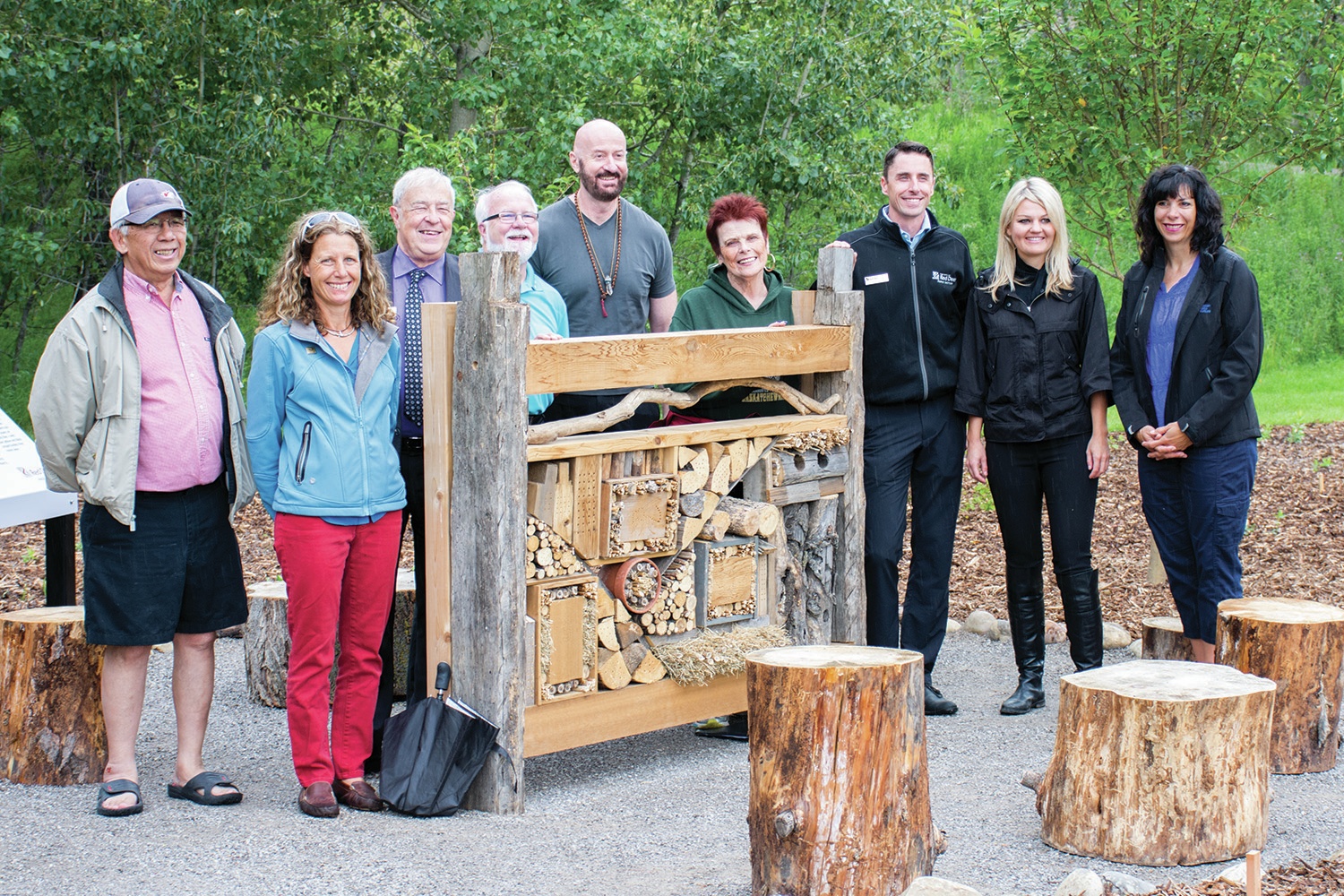The City of Red Deer unveiled it’s latest pollinating garden yesterday.
Bower Ponds will join the three other pollinator parks that can be found around Red Deer including City Hall Park, Snell Gardens and Maskepetoon Park.
“The garden provides two main things,” said Cynthia Pohl, lead designer of the pollinator garden. “It provides a food source and a nesting site. The food source are the plants which we chose from the parkland and prairie ecosystem so they’re all indigenous to Alberta and the nesting is the structures we’ve place in the garden.”
Pohl has been in ecological design and rebuilding habitat for over 20 years.
“I hope that people become engaged with it (the project),” said Pohl. “To see how they can rebuild pollinator habitats in their own backyards because it can be done on any scale and it will be successful.”
The new garden features a ‘pollinator hotel’ that provides a nest for bees that rely on wood for habitat, rocks which are a type of natural sun-bed for bees and several species of indigenous flora which provide a food supply for the pollinators in hopes to encourage growth in their populations.
The hotel portion of the garden took a couple of months to design and weeks of full-time work to put it together, according to the designer.
All across the world populations of bees have been at a decline due to climate change, loss of landscape, pesticides, etc.
Without pollinators several ecosystems will suffer such as fruits, vegetables, wildlife, and humans.
According to an information sheet provided at the Pollinator Parks press conference, more than 1,000 varieties of plants that humans rely on for food, medicine and fibre depend on pollinators to reproduce.
“Our intent is to create multiple patches of habitat all across the community that support pollination in the City as a whole,” said Red Deer Parks Superintendent Trevor Poth. “Ultimately, without pollination many of the foods we eat wouldn’t be available.”
Project Manager and Parks Ecological Planning Specialist Ken Lehmen, said that Bower Ponds, like the three other pollinator parks, are instrumental in demonstrating what the citizens can do in their own backyards.
“There’s other critters like beetles, wasps, hummingbirds, moths and butterflies, that pollinate,” said Lehman. “But bees are our primary pollinators because they do a really good job.”
The area of the garden covers roughly 120 ft. by 60 ft. and sits at the edge of one of the ponds along the trail.
The garden is now open to the public to learn more about pollinator species and their importance in our day-to-day lives.
student@reddeerexpress.com



